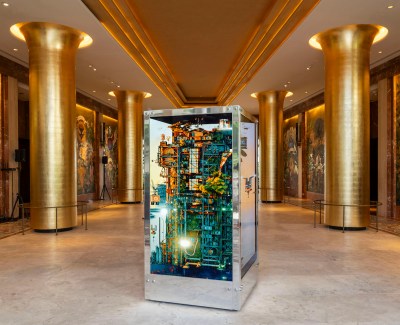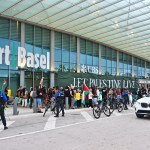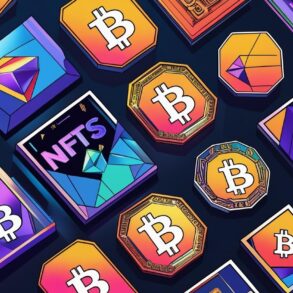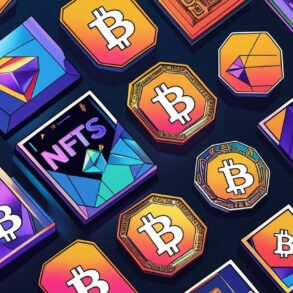During the 2021 crypto boom, Miami became the white-hot center of the scene: Sam Bankman-Fried, founder of cryptocurrency exchange FTX, christened the Miami Heat’s stadium as FTX Arena, the city played host to a raucous Bitcoin 2021, the world’s largest crypto conference, Wynwood became home to startups like Blockchain.com, Solana, and Ripple, and Mayor Francis Suarez announced that he was converting his salary to Bitcoin. And, of course, Miami Art Week that year and last year were marked by an endless series of NFT activations.
Post-boom, much has changed: SBF was convicted of fraud last month, a year after FTX collapsed, the FTX Arena has since been renamed the Kaseya Center, and Bitcoin 2023 had noticeably worse vibes (and attendance). And yet, though the exuberant abundance of funds may no longer be in play, Miami’s burgeoning digital art scene appears intact and noticeably matured.
At the forefront of those efforts is the Pérez Art Museum Miami, which became more invested in new media arts as Miami’s interest in digital art increased. In 2018, a donation by the John S. and James L. Knight Foundation went towards developing a new digital department, which received more funds during the 2021 boom and officially launched at the end of last year. This December, the museum launched PAMMTV, a streaming service for the museum’s new media and time-based works. (Meanwhile, the Knight Foundation opened Art Week on Monday by hosting Catalyst, an invite-only arts and tech forum.)
“Miami has always had people who are experimenting with digital art in really interesting ways, but the literacy wasn’t there from the institutional side for a long time,” Lauren Monzón, PAMM TV’s program manager, told ARTnews.
“The NFT boom was curious, because you did get a lot of excitement and anticipation around digital art from the art world and institutions. But that really quick rise and fall also led to skepticism in terms of digital art collecting. That’s something that I think we’re still grappling with a little bit.”

Pérez Art Museum Miami
Courtesy of Pérez Art Museum Miami
PAMM TV, and other similar digital media initiatives at the museum, are intended to bridge the gap by creating sustainable, considered infrastructure for new media art that isn’t purely dependent on financialization, while events around the fair are showing a deep interest in creating critical spaces for talking about digital art.
This year’s Miami Art Week was abundant with conferences on digital art: Tezos, the favored blockchain platform for many in the art world due to its more environmentally friendly architecture, hosted a day’s worth of talks and performances at the Nautilus Hotel. One of the featured talks was a conversation between Swiss mega-curator Hans Ulrich Obrist and the digital art duo Operator. Bitcoin Ordinals (an NFT platform for the Bitcoin blockchain) hosted a day of talks at the Sagamore Hotel, while Refraction, a Web3 organization, partnered with Miami Community Radio, a new radio and decentralized autonomous organization, to host a series of panels. The list goes on and on. The fairs also participated in the shift towards digital art, from Untitled Art Fair’s ‘Curating in the Digital Age’ curatorial theme to SCOPE’s hosting of a panel on women in Web3.
Artists and institutions who were involved in NFTs during that 2021 peak are also starting to pivot. The point now, they say, isn’t to flood the market with NFT collections but to offer works that are more considered and often have a physical component to them.
At the ritzy Faena Hotel Miami Beach, the hotel’s nonprofit Faena Art put works by digital artists Beeple and Sebastian Errazuriz in its lobby, with an additional massive installation by Errazuriz on the beach. Faena’s selection of these artists is a sign that, while NFTs may be fading, institutions are still interested in supporting artists who speak to Miami’s tech-centered economy and population.
Though Errazuriz and Beeple released NFT collections in 2021, the artists have since moved onto hybrid works that comment on and incorporate digital elements. In the lobby, Beeple was presenting the sculpture S.122 (2023)— that and its sister work HUMAN ONE are the digital artist’s first physical works. Meanwhile, Errazuriz has a large sculpture, Battle of the Corporate Nations (2016), that depicts Mark Zuckerberg, Jeff Bezos, and Elon Musk in the midst of battle, cast in white stone. Errazuriz’s public installation on the beach, MAZE: Journey Through the Algorithmic Self, is made up of eleven miles-worth of plywood, covered in a stucco-like finish, whose center is supposed to act as a kind of public square where people can mingle.

Digital artist Beeple’s sculpture S.122 on view at The Cathedral at Faena Hotel Miami Beach during Miami Art Week 2023.
Oriol Tarridas/Courtesy of Faena Art
“The problem with NFTs is that it makes no sense to be acquiring them today, artworks that are limited to the reality we currently have,” Errazuriz told me, as he guided us through his maze. “It would be the equivalent of buying video games in the ‘70s.” Guards gazed down at us from platforms topped with red-and-white umbrellas. “Sure, you might get lucky and you might buy Space Invaders or Pac Man,” he continued. But everything else, it’s gonna kind of be useless and uninteresting a decade or two later.”
Errazuriz’s point: Until digital art technology develops to create better, more immersive experiences, he’d rather focus on works that foster human connections. Besides, the rapid development of AI over the last two years has led Errazuriz to think humans don’t stand a chance of surviving the disruption that is to come anyways.
Though some were banking on the NFT boom to radically change the state of new media art, the momentum from that market doesn’t appear to have been wasted. Kelani Nicole, owner of new media art gallery TRANSFER, moved to Miami in 2021 when she was invited to be a fellow at the Oolite Arts Center.
“I was really optimistic that the NFT boom would finally give digital artists some leverage and I moved here because of that,” Nicole told ARTnews. “The seismic shift of crypto and encryption hit Miami really hard as the first place in the US to really embrace that,”
As those markets have washed away, Nicole hasn’t seen sustained interest or support from most of those one-time collectors. Yet, regardless of the shifting attention of Miami’s tech elite, the move has enabled Nicole to run a salon series for digital artists in the years since.
“My observation is that in Miami, there are a lot of tech companies, there are some research universities, there’s other organizations that are focused on equipment and those kinds of resources. And so I wanted to bring critical theory and conversation into Miami,” said Nicole.
Since then, she’s seen a nascent community of digital artists come together and develop rapidly.
“Miami is a very apolitical place. It’s a very wealth-based culture, fashion-based culture, a seasonal culture. But the artists who live and work here, and who are on the ground have a different experience of Miami. They’re showing us a city in crisis,” said Nicole. “And this is why spaces that support and shine a light on these kinds of critical practices are so important.”
If the NFT boom-and-bust left a bad taste in many people’s mouths, the resulting afterglow seems to be providing enough space, interest, and funds to continue Miami’s digital art scene in a more considered way.
This post was originally published on this site be sure to check out more of their content








